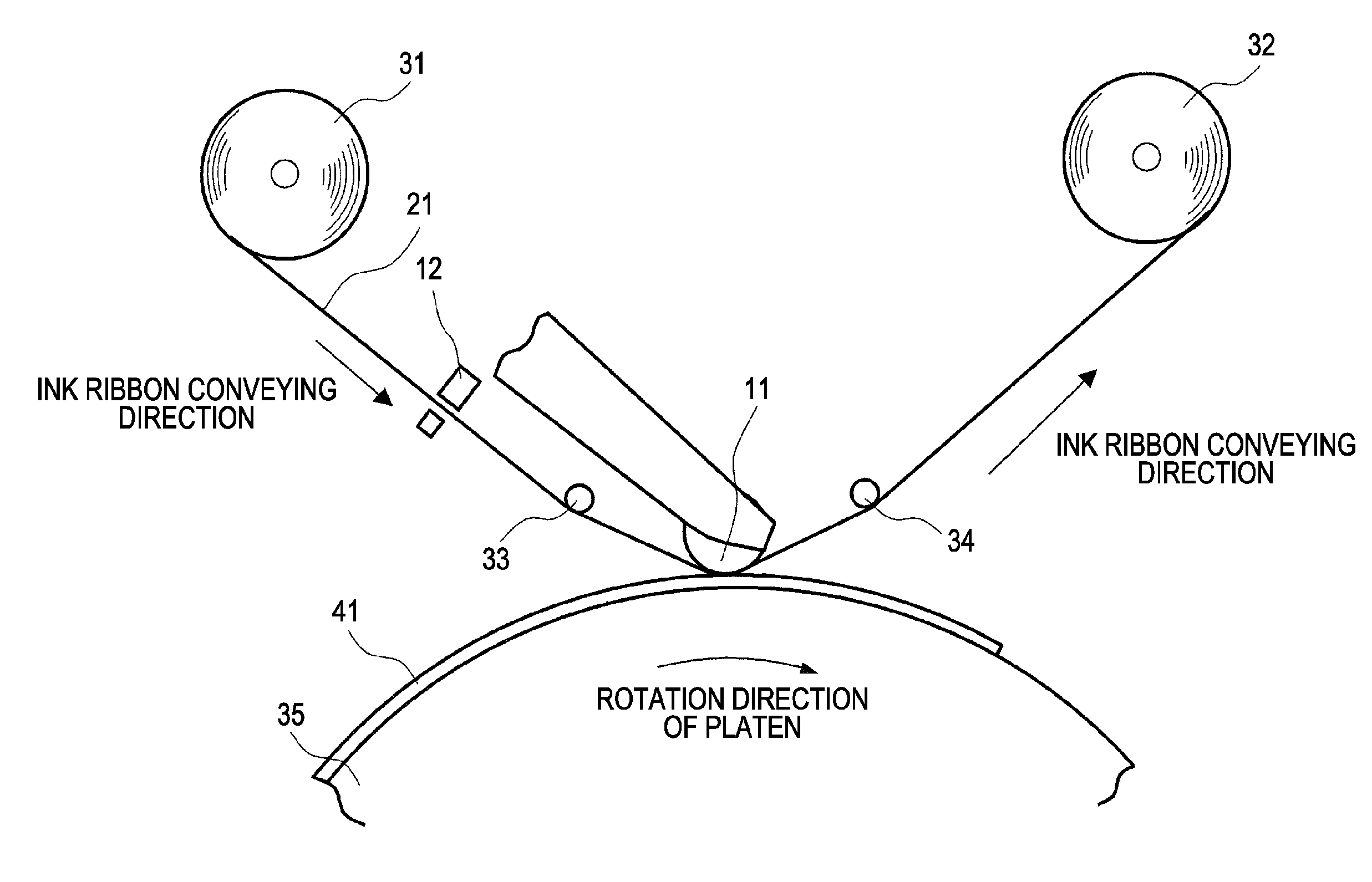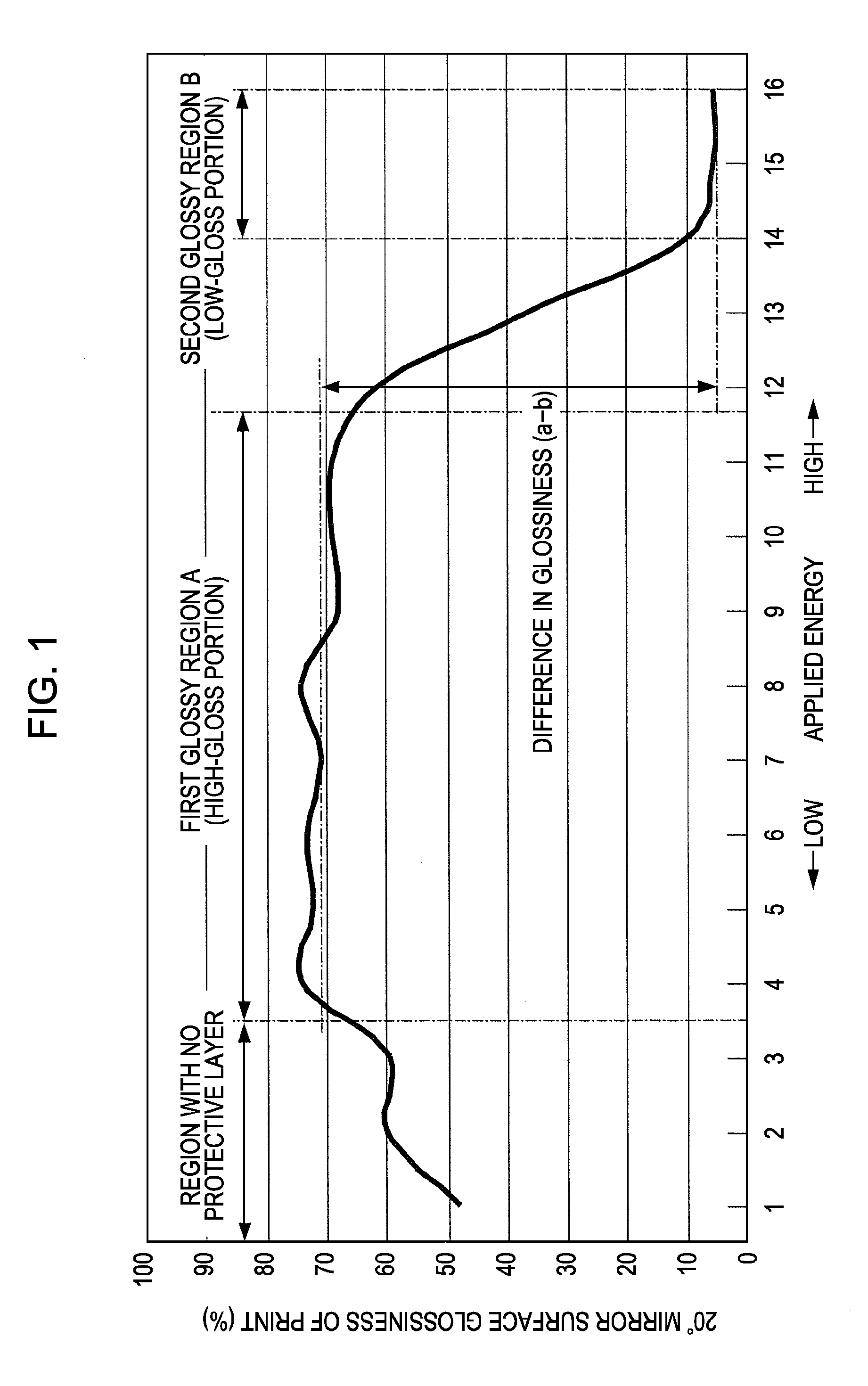Method for producing print
a printing method and print technology, applied in printing, lamination, chemistry apparatus and processes, etc., can solve the problems of degrading the quality of the resulting print, and achieve the effect of clear differences in surface glossiness and visual asperities
- Summary
- Abstract
- Description
- Claims
- Application Information
AI Technical Summary
Benefits of technology
Problems solved by technology
Method used
Image
Examples
Embodiment Construction
[0041]An embodiment of a method for making a print will now be described with reference to drawings.
[0042]First, a main printing unit of a printing apparatus used for implementing the method of the embodiment is described by referring to a schematic diagram in FIG. 2.
[0043]As shown in FIG. 2, the main printing unit includes a supply reel 31 for supplying a thermal transfer sheet (hereinafter also referred to as “ink ribbon”) 21 and a winding reel 32 that winds the ink ribbon 21. The main printing unit also includes guide rollers 33 and 34 for guiding the ink ribbon 21 to a printing position. A thermal transfer head 11 that forms a printing position is disposed between the guide rollers 33 and 34.
[0044]The main printing unit also includes a platen 35 that rotates and conveys an image-receiving sheet (hereinafter also referred to as “printing paper”) 41 to the printing position corresponding to the thermal transfer head 11.
[0045]Examples of details of the main printing unit having the...
PUM
| Property | Measurement | Unit |
|---|---|---|
| particle diameter | aaaaa | aaaaa |
| particle diameter | aaaaa | aaaaa |
| particle diameter | aaaaa | aaaaa |
Abstract
Description
Claims
Application Information
 Login to View More
Login to View More - R&D
- Intellectual Property
- Life Sciences
- Materials
- Tech Scout
- Unparalleled Data Quality
- Higher Quality Content
- 60% Fewer Hallucinations
Browse by: Latest US Patents, China's latest patents, Technical Efficacy Thesaurus, Application Domain, Technology Topic, Popular Technical Reports.
© 2025 PatSnap. All rights reserved.Legal|Privacy policy|Modern Slavery Act Transparency Statement|Sitemap|About US| Contact US: help@patsnap.com



